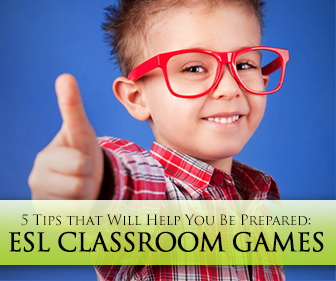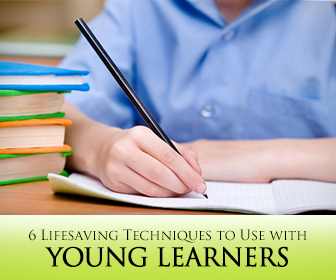Games in the ESL Classroom: 5 Tips that Will Help You Be Prepared


This of course happens in our classrooms, too. When we think about teaching an ESL course for kids, we imagine and hope for an ideal situation. In basic terms, this would be to have a group of kids that are in the same level and age group. Sadly for us, reality is a bit more challenging than that. Once in a while, for whatever reason, children are placed in classes according to their level of proficiency but not their age. This can happen more often than you think, and it can certainly complicate things. The question is: what do you do when you have an 8-year old who can write in the same class with a 6-year-old who has just started writing? Well, there is a light at the end of this tunnel. Take a look at these nifty techniques.

There are games that can be adapted to practically all age groups and levels, while others are more appropriate for certain ages and levels. By using games and activities that are suitable for all ages, you ensure that everyone is able to participate and that it won’t be too easy or difficult. Some games have different twists and turns that perhaps older, more developed children might understand but not younger ones. Here are some examples of games that are great with different ages: bingo, board games, card games and puzzles.
It’s not only a question of what game and activities you choose, but also how you use them with different ages. For example, if the kids are required make sentences with a specific word that is on a card they choose, a younger child would just think of a sentence while the older child might also write it down or even think of a question and answer it. The older child should do more because they can do more. They are at a different developmental stage. The way they reason and their capabilities in general are more developed.
In families, kids tend to understand that the older ones have to give the younger ones a hand once in a while. In a classroom, you can use the same technique. There may be activities that older children will finish before the younger ones, in this case you can ask them to help another fellow student. A second option is to pair older kids with younger ones; the cooperation and collaboration will benefit both of them in different ways. More importantly, they’ll all be busy and productive.
Planning is important here more than ever. You need to set clear attainable objectives for each lesson and that is just impossible without a good plan. Make sure your goals are also realistic to each age group in the class. Some activities might be a little more challenging for certain ages. Don’t get ahead of yourself; younger kids might need more time to progress. There are achievements that might take a little longer. If you are practicing a verb tense with a game, think of this: what exactly do they need to learn to do? Practice sentences with verbs? Ask and answer questions? Perhaps some kids will just think of questions while others might do a bit more. The objective set for the younger kids won’t be the same as the one you’ll set for the older kids. If you don’t analyze these differences, there is a risk that the older kids may not find the class challenging enough or that younger kids can’t keep up.
Once again planning is everything here. Even if we use activities and games that have skillfully been adapted to suit all ages in the class, if you are not prepared, things can go wrong. Sometimes, it is hard to know exactly how challenging or easy something will be. So, a good choice is to have back up activities for each goal. Teachers often think it is always the younger kids that take longer but sometimes it is quite the opposite, more so if you assigned the more challenging activities to the older kids. Believe me, you don’t want young kids running around with nothing to do. Always keep them busy.
Assigning homework is an excellent way to balance out anything that was overlooked during the class. Also, it can be specific to each age or even each student depending on their language needs.
The following day each exercise can be corrected individually and feedback given to each student.
If we are, there is nothing we can’t handle, though sometimes we might feel the exact opposite. With each challenge we encounter in the classroom, there is always something we can do. As Moliere said, “the greater the obstacle, the more glory in overcoming it”.